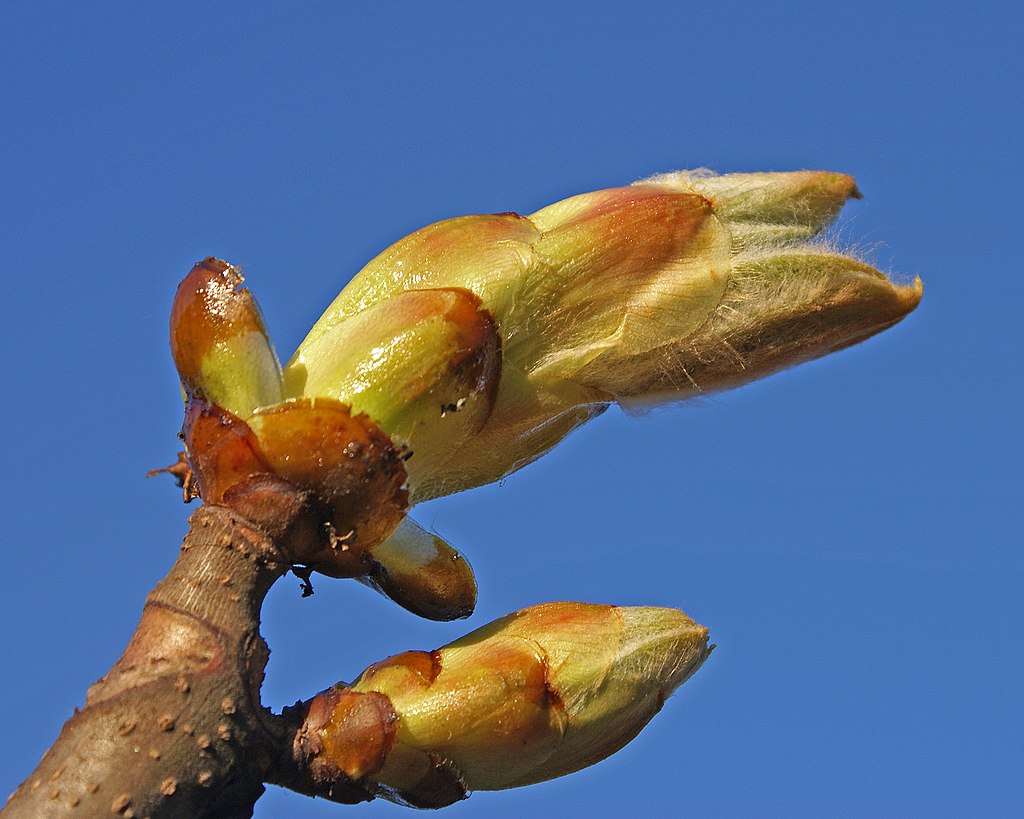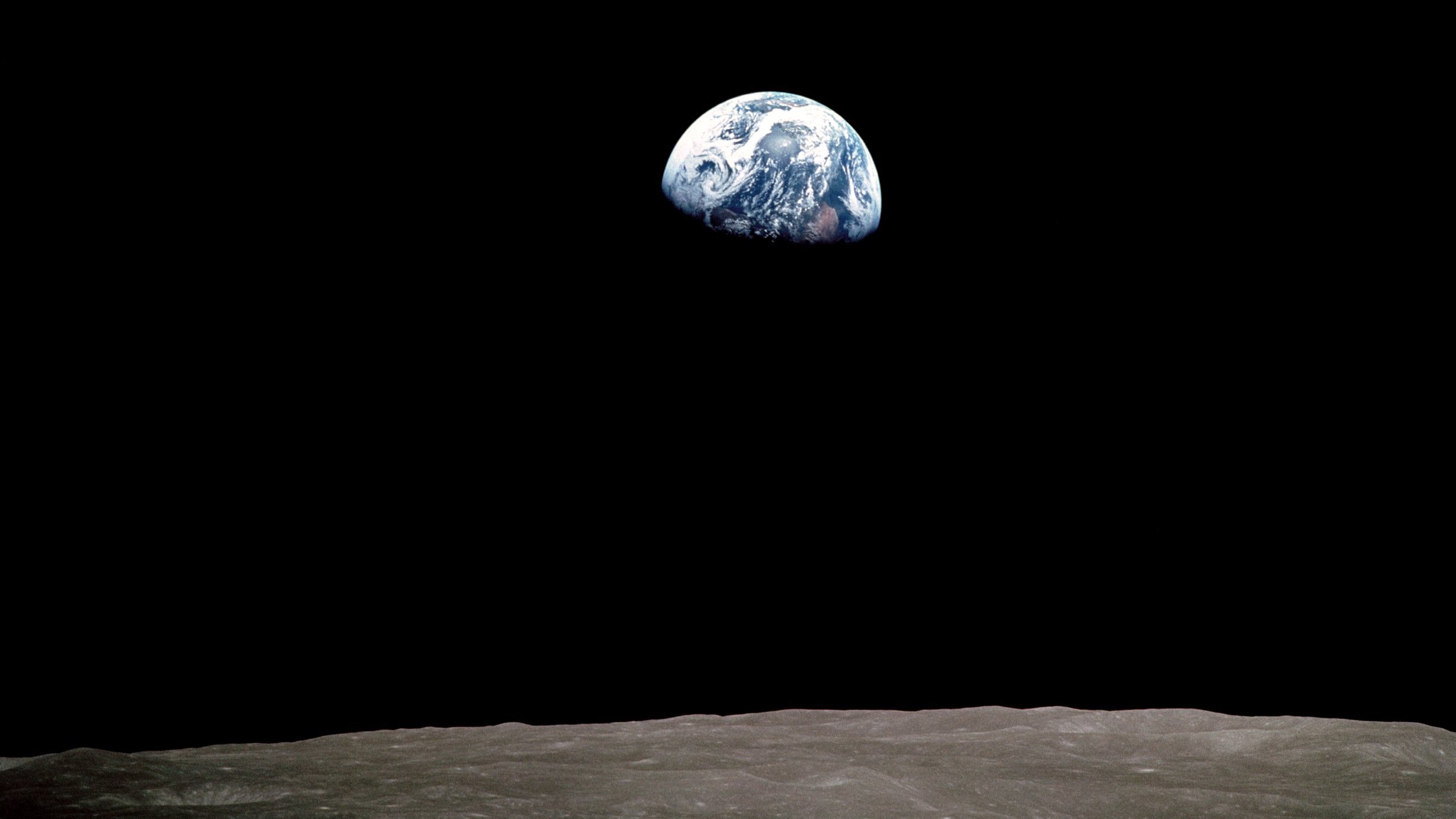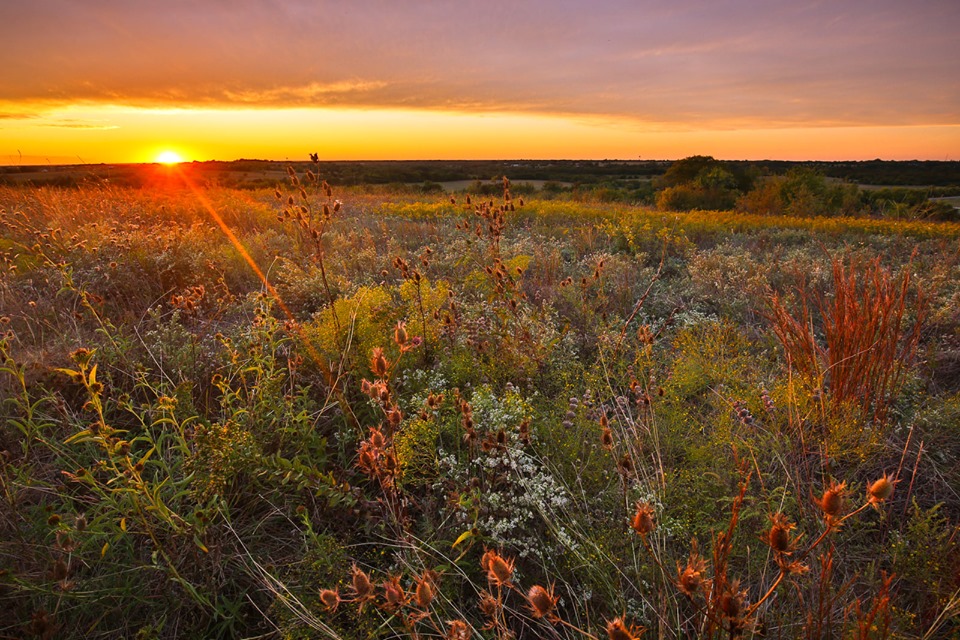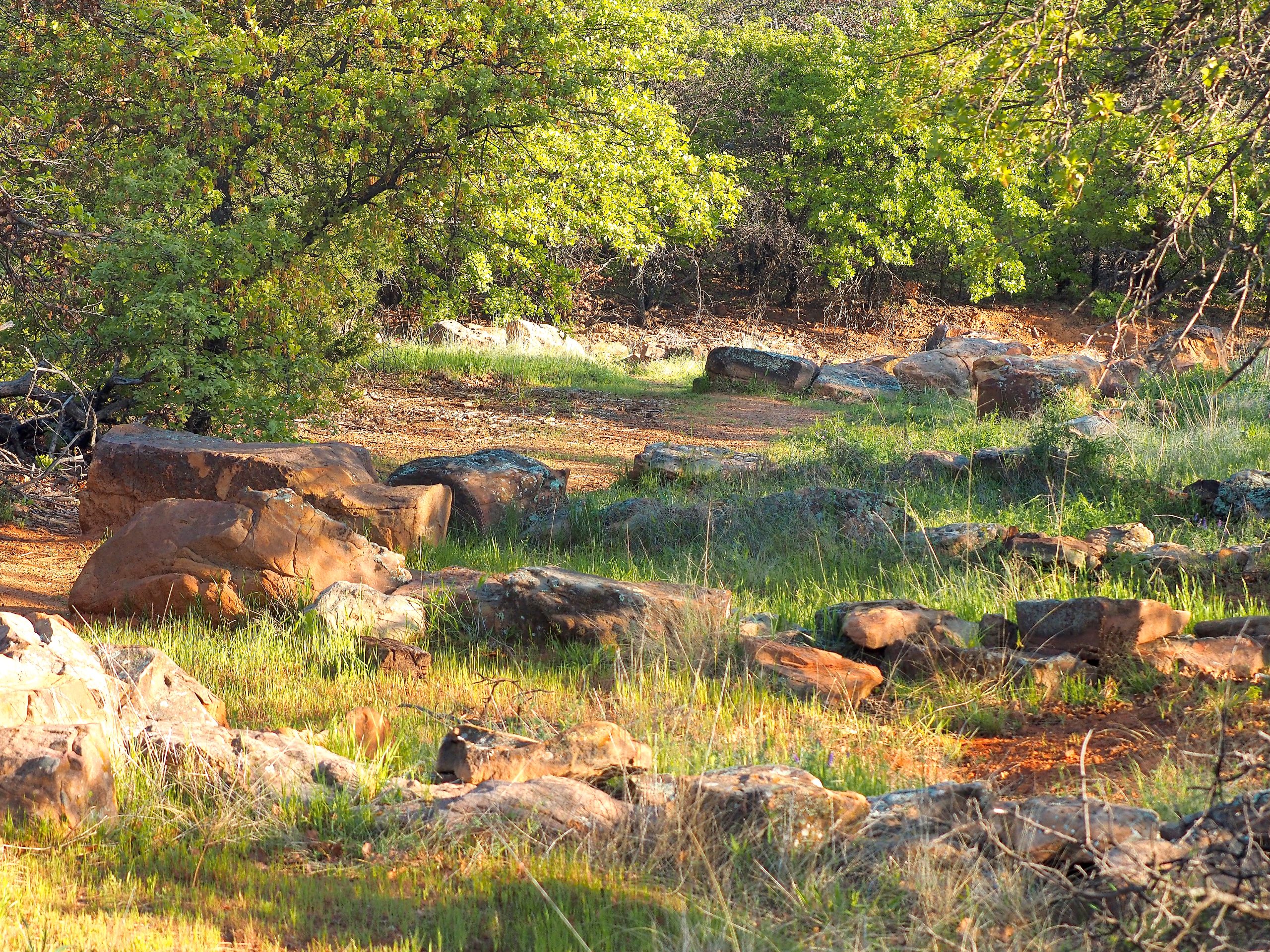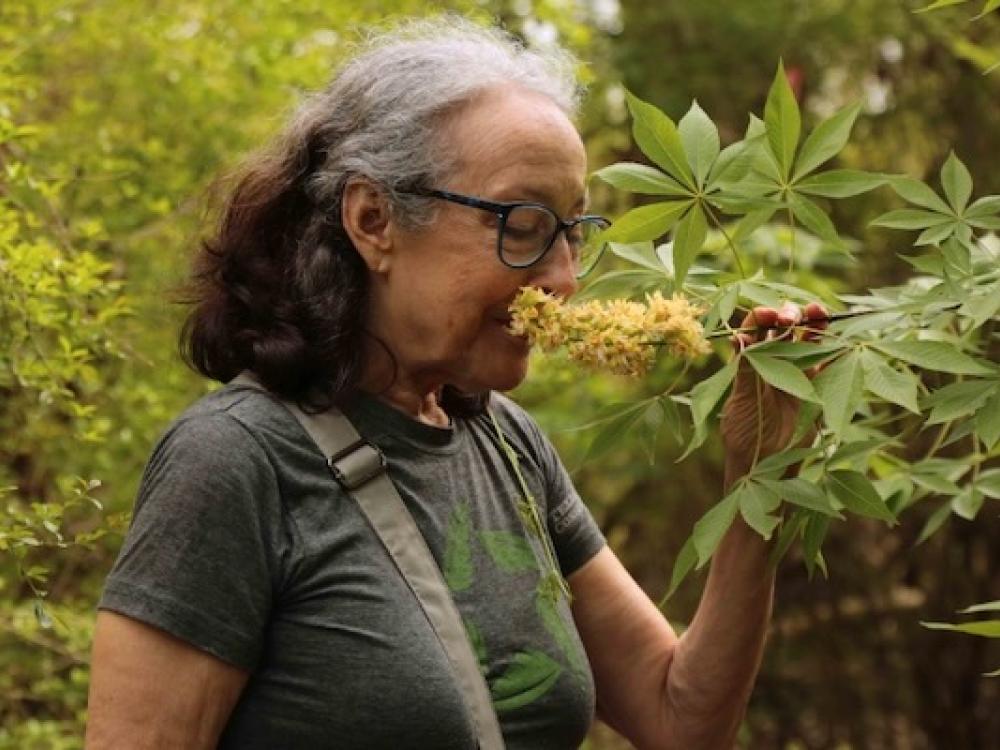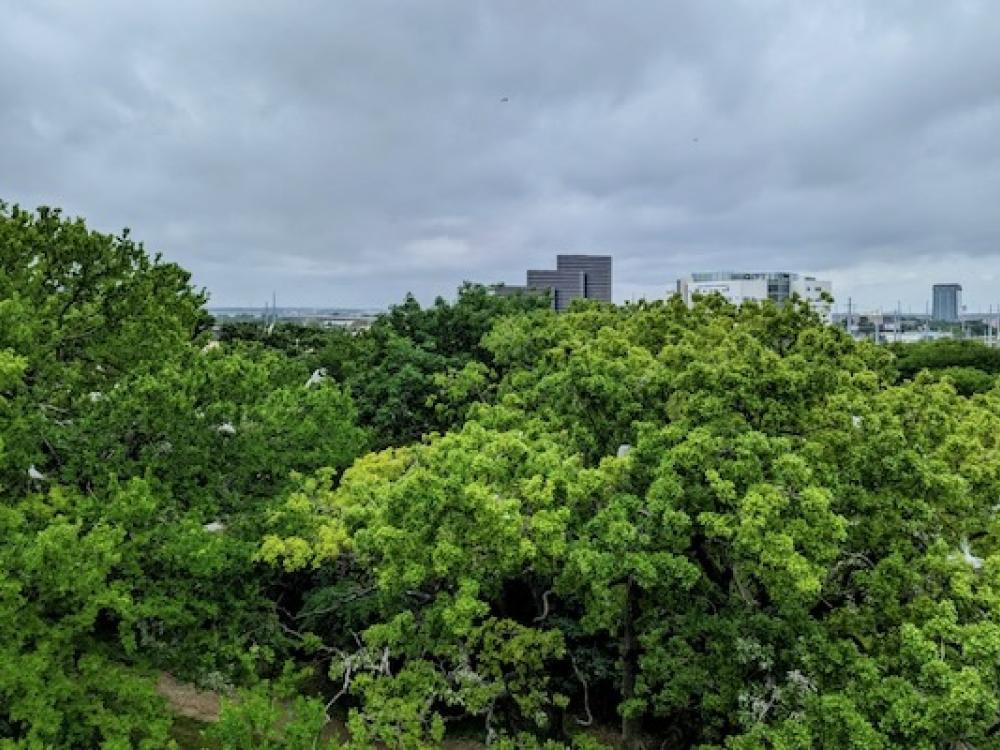Daphne Prairie: The Land of Our Bones
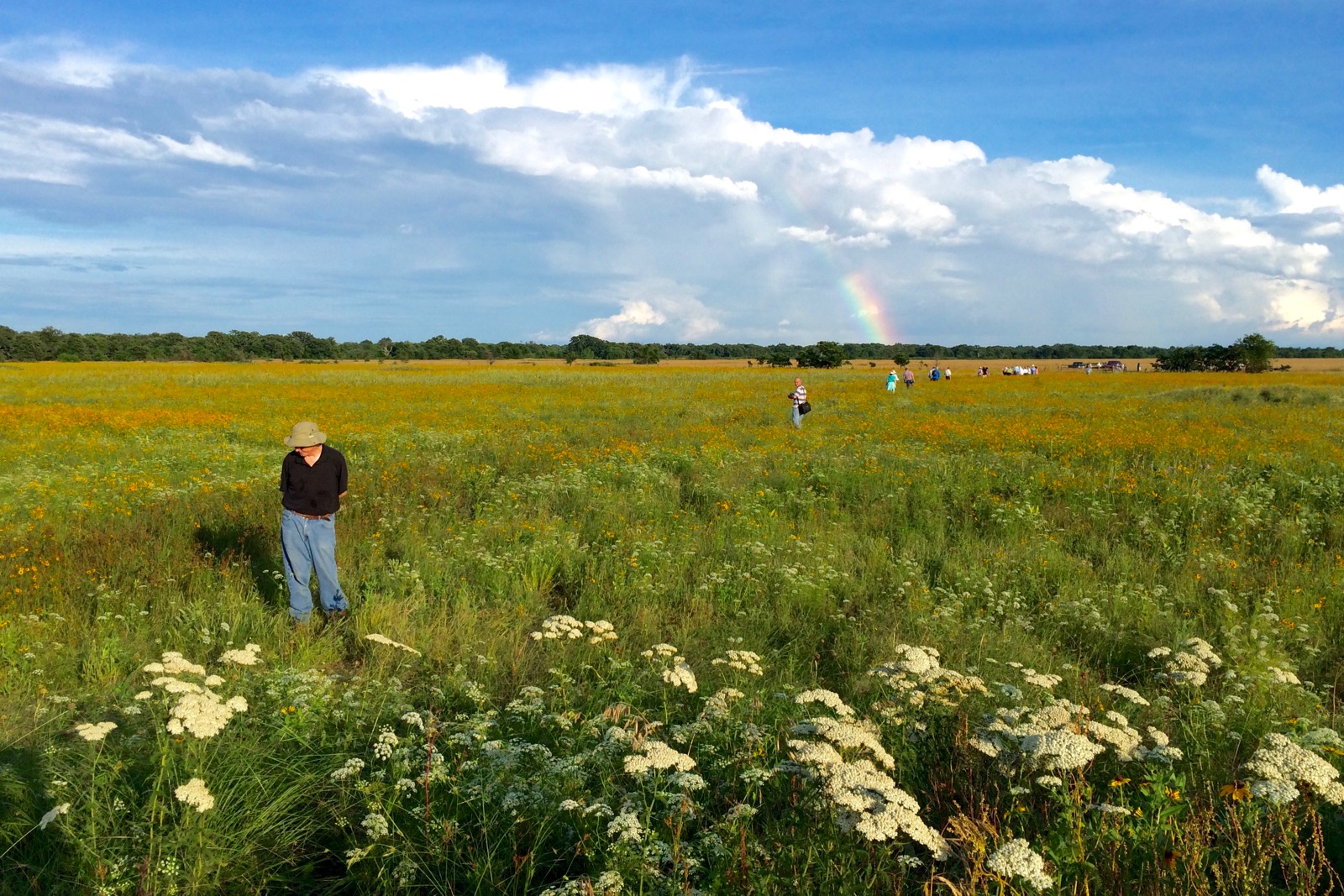
By Amy Martin
The bus driver nimbly navigates yet one more narrow country road. B. F. Hicks and his crew greet us at the gate, along with some locals who’ve picked up the prairie passion from Hicks. Two drive huge pickups that tow 16-foot trailers, one stacked with hay bales for seating and the other with benches. We pile on in delight. It’s the Cadillac of hayrides.
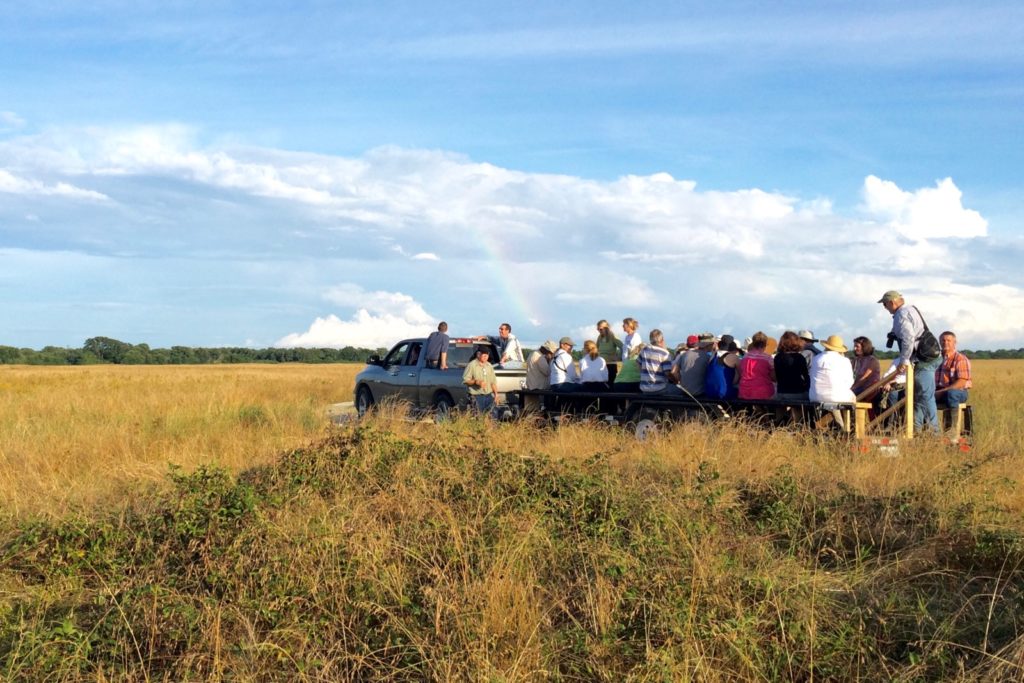 Hicks, a lawyer in nearby Mount Vernon, is the captain of this party. The 922 acres of Daphne Prairie has been in his Franklin County family since the 1850s. The original prairie of tridens and silveanus dropseed, never plowed or disturbed, is nearly as large as Clymer and just as important for preserving prairie plant diversity.
Hicks, a lawyer in nearby Mount Vernon, is the captain of this party. The 922 acres of Daphne Prairie has been in his Franklin County family since the 1850s. The original prairie of tridens and silveanus dropseed, never plowed or disturbed, is nearly as large as Clymer and just as important for preserving prairie plant diversity.
But once the property was split up and passed on by his parents, only B.F. felt passion for the prairie. Determined to restore a family heritage, he persisted with many years of negotiations with siblings and others to purchase the acreage he wanted.
The landscape is flat, with little roll, crossed by old fencelines still marked by trees. Folks laugh as our hayride jiggles and winds among the prairie parcels, splashing through water from recent rain in draws and low spots. Occasionally the trailers stop and crew members fill us in on conservation activities at Daphne that garnered Hicks the Lone Star Land Steward Award from Texas Parks and Wildlife in 2013. To ensure his legacy continues, Hicks assigned Native Prairies Association of Texas a conservation deed 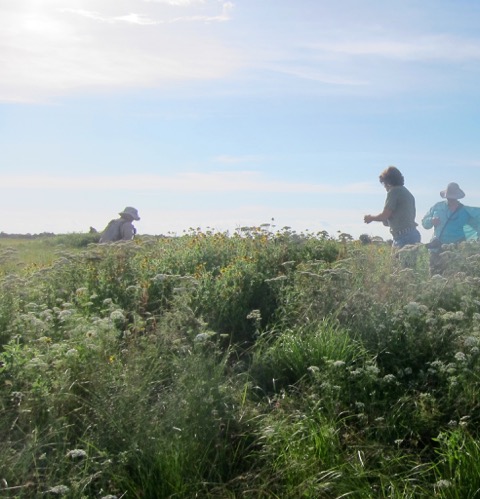 on the land. It’s an intensely significant conservation effort, preserving the history of both land and family, woven as one.
on the land. It’s an intensely significant conservation effort, preserving the history of both land and family, woven as one.
At last, the hayride comes to a halt in what seems to be the center of Daphne. There are no neighboring plots to see, not an indication of civilization anywhere. This is inner Daphne, its crown jewel — 88 acres that was never grazed and cut for hay only once a year on July 4th as a part of family festivities.
So pristine in its biodiversity, boasting nearly 400 species, that Nature Conservancy biologists spent just one afternoon there and added dozens more species. Just yards away, in the area that was grazed and hayed, smaller delicate forbs are not seen.
Prairie nerds bound off the trailers. “Look at those mima mounds!” several exclaim at once. So many mounds, every 20 yards or so. They are genuinely overwhelmed, like kids faced with a 100-count box of chocolates. Unlike others we’ve seen, these mounds are nearly twice tall at five to six feet. It shows how cattle grazing done without care can decimate a landscape. Squatting down to gaze over the prairie at its level, the mima look like little green volcanoes with colorful wildflower lava flows. Butterflies and bees are everywhere.
For a medium-grass prairie, the inner Daphne is astoundingly thick. Yet less than a year ago, Hicks and his crew completed a controlled burn on it, incinerating all the foliage. Fascinating to hear what seems like Texas country boys talking about Daphne’s beauty and restorative quiet, how the prairie has a different color palette from week to week. One remarks that Daphne creates more good on its own than a cultivated field ever could and how that makes most men jealous. Prairie metaphors run deep.
“We come and go, but the land is always here. And the people who love it and understand it are the people who own it – for a little while.” – Willa Cather, O Pioneers!
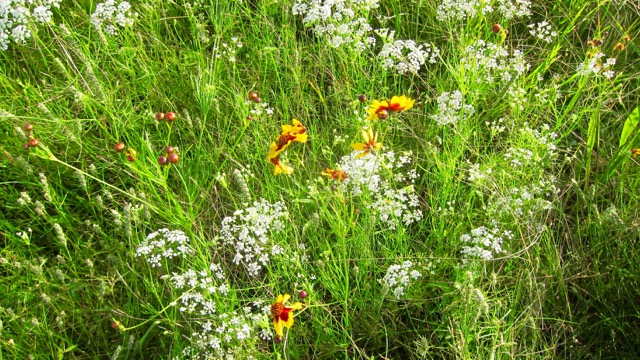 Daphne’s fertility is stupendous. Entire patches of rare rattlesnake master, spikey yucca leaves and tall stiff flower stems topped with white globular thistle-like flowers. All that angularity surrounded at the base by airy sensitive briar — the gentle toughness of the prairie encapsulated. Vast patches of giant coneflower and compass plant try to out compete each other for whose shade of yellow is most beloved by the Sun.
Daphne’s fertility is stupendous. Entire patches of rare rattlesnake master, spikey yucca leaves and tall stiff flower stems topped with white globular thistle-like flowers. All that angularity surrounded at the base by airy sensitive briar — the gentle toughness of the prairie encapsulated. Vast patches of giant coneflower and compass plant try to out compete each other for whose shade of yellow is most beloved by the Sun.
The peace of Daphne sweeps up from underneath you. It stills you, reminds you that your sole job in this life is to pay attention. To stand on a mima mound and feel how the prairie wind is full of energy and made from a myriad of micro air currents fused into one. To inhale the aroma of green living things — so 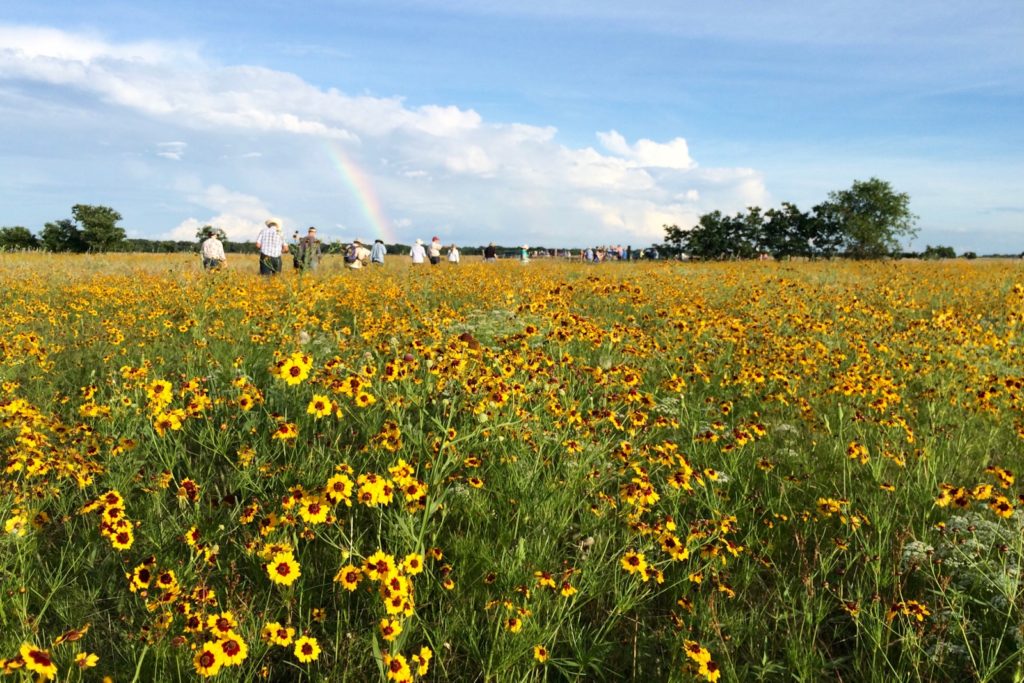 different from the decay and mold of forests. You notice how feet never touch ground in the prairie, but tread upon a weave of fallen leaves that softens upon touch like a pillow.
different from the decay and mold of forests. You notice how feet never touch ground in the prairie, but tread upon a weave of fallen leaves that softens upon touch like a pillow.
There is a sense of the sacred at Daphne. An ocean of grass spreads horizon to horizon, and the sky reminds that there is nothing between us and the infinite except our misplaced faith in gravity.
I am of this land, this Texas land, bones forged from crops sprung from its soil, raised on milk from cows that grazed its fields. I breathe air that emits from its plants and drink water of its reservoirs. It is my body to its very bones. Daphne strips me of hubris, forces the perspective of time with such clarity I start to cry. This is history, built from roots and leaves, minerals and water, a witness to all man’s doings that came long before us and will continue ever on. The land holds memory, weeping and laughing as required. And I as its daughter join along.
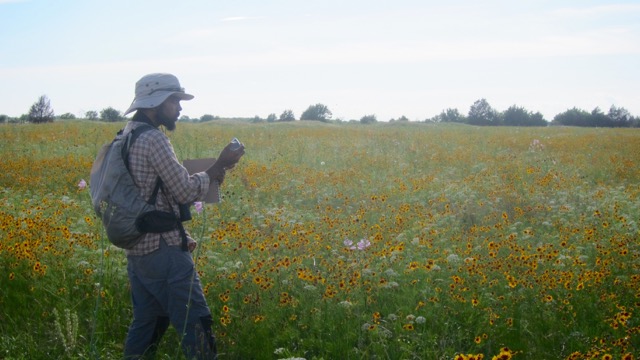 The mima mounds cast long shadows. Hicks wrangles the prairie troupers. Small groups stake out various mima mounds, enraptured with their own experiences and reluctant to stop.
The mima mounds cast long shadows. Hicks wrangles the prairie troupers. Small groups stake out various mima mounds, enraptured with their own experiences and reluctant to stop.
As we begin to head back to the hayride trailers, a rainbow arises in the west against the receding storm clouds, with Daphne the prairie pot of gold at its end.
The prairie skies can always make you see more than what you believe.” – Jackson Burnett, The Past Never Ends
Having oneness experiences with the universe stirs a mighty hunger. Hicks hustles us back to the bus and on to the nearby town of Mount Vernon. Impassioned about history in all its forms, he renovated a 1924 Methodist church and turned it into a B&B and event hall rather than see it torn down. The old sanctuary hosts tables of barbeque and salads, cold wine and beer and fanciful cakes from the local 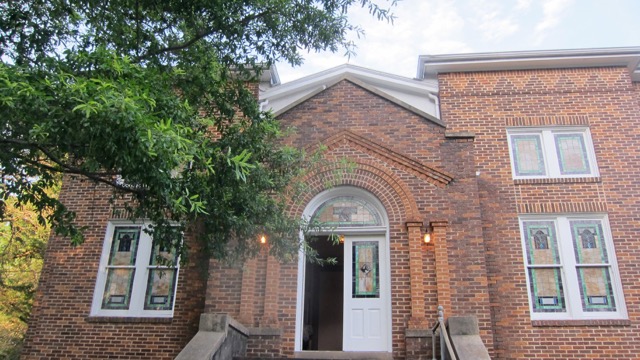 baker, plus plenty of pews to sit in.
baker, plus plenty of pews to sit in.
But it’s hard to stay seated. Against the walls are display cases of antique books and decorative notions, arrowheads a plenty and ancient Native American pottery.
The collection is at once both whimsical and methodical, so very much like its curator. What is this tall, well-locked wooden piece about the size of a phone booth? It’s a gun closet, says Hicks, “But I keep a skeleton in it.”
Exhausted and well fed, we pile on the bus. The church ladies pack the bus driver up with plenty of food to go. It’s nearly two hours to Dallas. We are a motley crew, rather dirty and wet, tired and happy. The bus tour forged at least a dozen new converts to preach the prairie gospel, ready to share with others its living chapel of grass, flower, sky and infinite time.
“This country was mostly wild pasture and as naked as the back of your hand… so the country and I had it out together and by the end of the first autumn, that shaggy grass country had gripped me with a passion I have never been able to shake.” – Willa Cather
Photos by Kim Conrow and Stalin SM.

